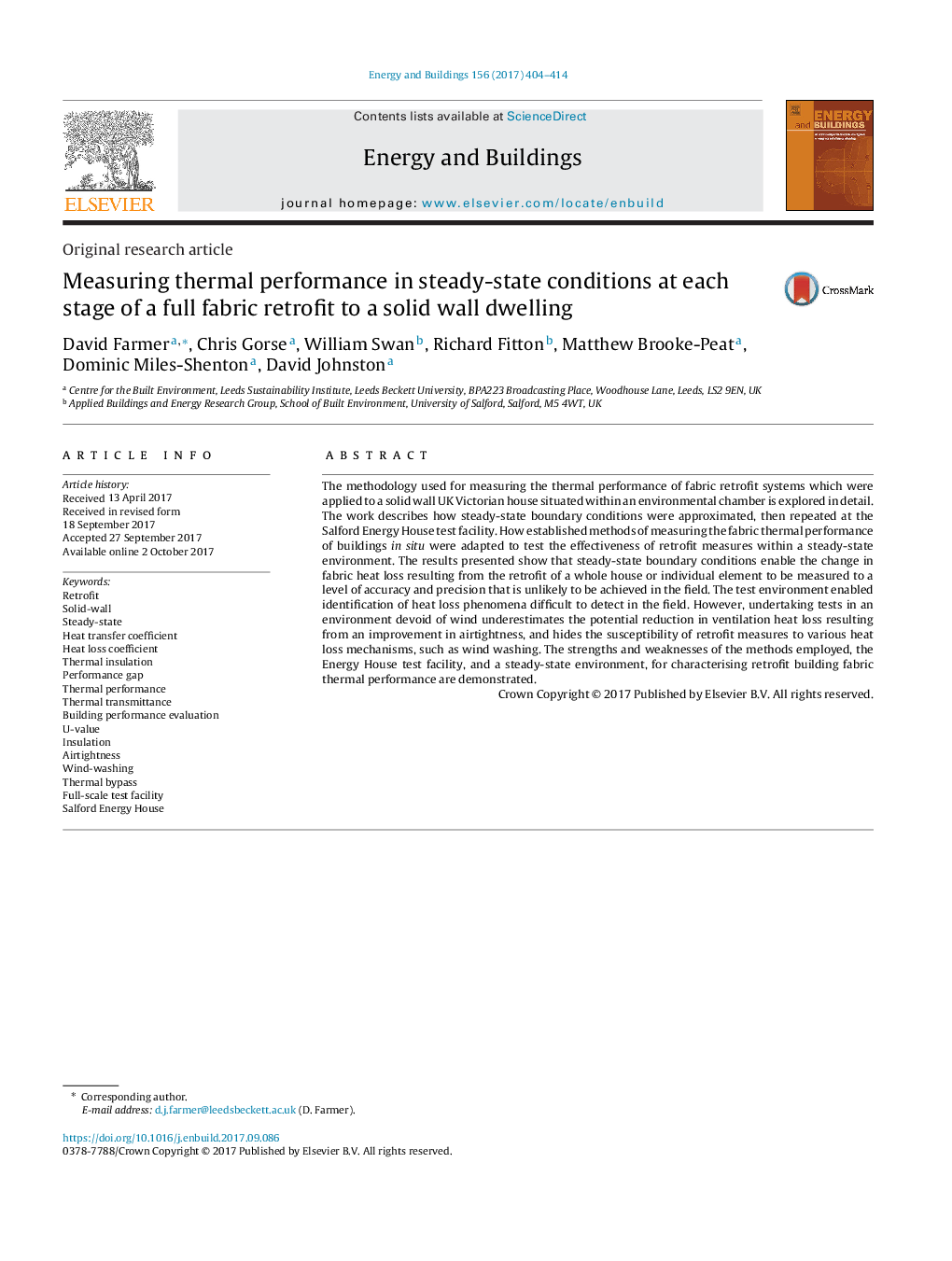| کد مقاله | کد نشریه | سال انتشار | مقاله انگلیسی | نسخه تمام متن |
|---|---|---|---|---|
| 6729458 | 1428934 | 2017 | 11 صفحه PDF | دانلود رایگان |
عنوان انگلیسی مقاله ISI
Measuring thermal performance in steady-state conditions at each stage of a full fabric retrofit to a solid wall dwelling
ترجمه فارسی عنوان
اندازه گیری عملکرد حرارتی در شرایط حالت پایدار در هر مرحله از تکمیل کامل پارچه به یک خانه دیواری جامد
دانلود مقاله + سفارش ترجمه
دانلود مقاله ISI انگلیسی
رایگان برای ایرانیان
کلمات کلیدی
U-value - ارزش UBuilding performance evaluation - ارزیابی عملکرد ساختمانThermal transmittance - انتقال حرارتRetrofit - بازسازیSteady-state - حالت پایدارperformance gap - شکاف عملکردHeat loss coefficient - ضریب افت خزشHeat transfer coefficient - ضریب انتقال حرارتInsulation - عایقThermal insulation - عایق حرارتیThermal performance - عملکرد حرارتیAirtightness - هوای گرم
ترجمه چکیده
روش مورد استفاده برای اندازه گیری عملکرد حرارتی سیستم های تکمیل پارچه که به یک دیوار جامد اعمال می شود، خانه ی ویکتوریا بریتانیا که در محیط محفظه قرار دارد، به طور دقیق مورد بررسی قرار می گیرد. این کار نشان می دهد که چگونه شرایط مرزی حالت پایدار تقریب می یابد، و سپس در تست مرکز انرژی سالفورد تکرار می شود. چگونه روش های اندازه گیری عملکرد حرارتی ساختمان ساختمان ها در محل مورد سنجش قرار گرفت تا آزمایش اثربخشی اقدامات تکمیل شده در یک محیط ثابت را تطبیق دهند. نتایج ارائه شده نشان می دهد که شرایط مرزی حالت پایدار باعث تغییر در از دست دادن حرارت پارچه می شود که از تکمیل یک کل خانه یا عنصر فردی به سطح دقت و دقت اندازه گیری می شود که بعید است در این زمینه به دست آید. محیط آزمایش، شناسایی پدیده های تلفات گرما را شناسایی کرد. با این حال، تست های انجام شده در یک محیط بدون استفاده از باد، کاهش قابل توجهی در کاهش تلفات حرارت تهویه ایجاد شده از طریق بهبود هوای سازگاری را کاهش می دهد و حساسیت اقدامات تکمیل شده را به مکانیزم های مختلف از دست دادن گرما مانند شستن باد پاک می کند. نقاط قوت و ضعف روش های مورد استفاده، مرکز آزمایشی خانه انرژی و یک محیط حالت پایدار برای مشخص ساختن ویژگی حرارتی ساختمان ساخت و ساز مجتمع نشان داده شده است.
موضوعات مرتبط
مهندسی و علوم پایه
مهندسی انرژی
انرژی های تجدید پذیر، توسعه پایدار و محیط زیست
چکیده انگلیسی
The methodology used for measuring the thermal performance of fabric retrofit systems which were applied to a solid wall UK Victorian house situated within an environmental chamber is explored in detail. The work describes how steady-state boundary conditions were approximated, then repeated at the Salford Energy House test facility. How established methods of measuring the fabric thermal performance of buildings in situ were adapted to test the effectiveness of retrofit measures within a steady-state environment. The results presented show that steady-state boundary conditions enable the change in fabric heat loss resulting from the retrofit of a whole house or individual element to be measured to a level of accuracy and precision that is unlikely to be achieved in the field. The test environment enabled identification of heat loss phenomena difficult to detect in the field. However, undertaking tests in an environment devoid of wind underestimates the potential reduction in ventilation heat loss resulting from an improvement in airtightness, and hides the susceptibility of retrofit measures to various heat loss mechanisms, such as wind washing. The strengths and weaknesses of the methods employed, the Energy House test facility, and a steady-state environment, for characterising retrofit building fabric thermal performance are demonstrated.
ناشر
Database: Elsevier - ScienceDirect (ساینس دایرکت)
Journal: Energy and Buildings - Volume 156, 1 December 2017, Pages 404-414
Journal: Energy and Buildings - Volume 156, 1 December 2017, Pages 404-414
نویسندگان
David Farmer, Chris Gorse, William Swan, Richard Fitton, Matthew Brooke-Peat, Dominic Miles-Shenton, David Johnston,
